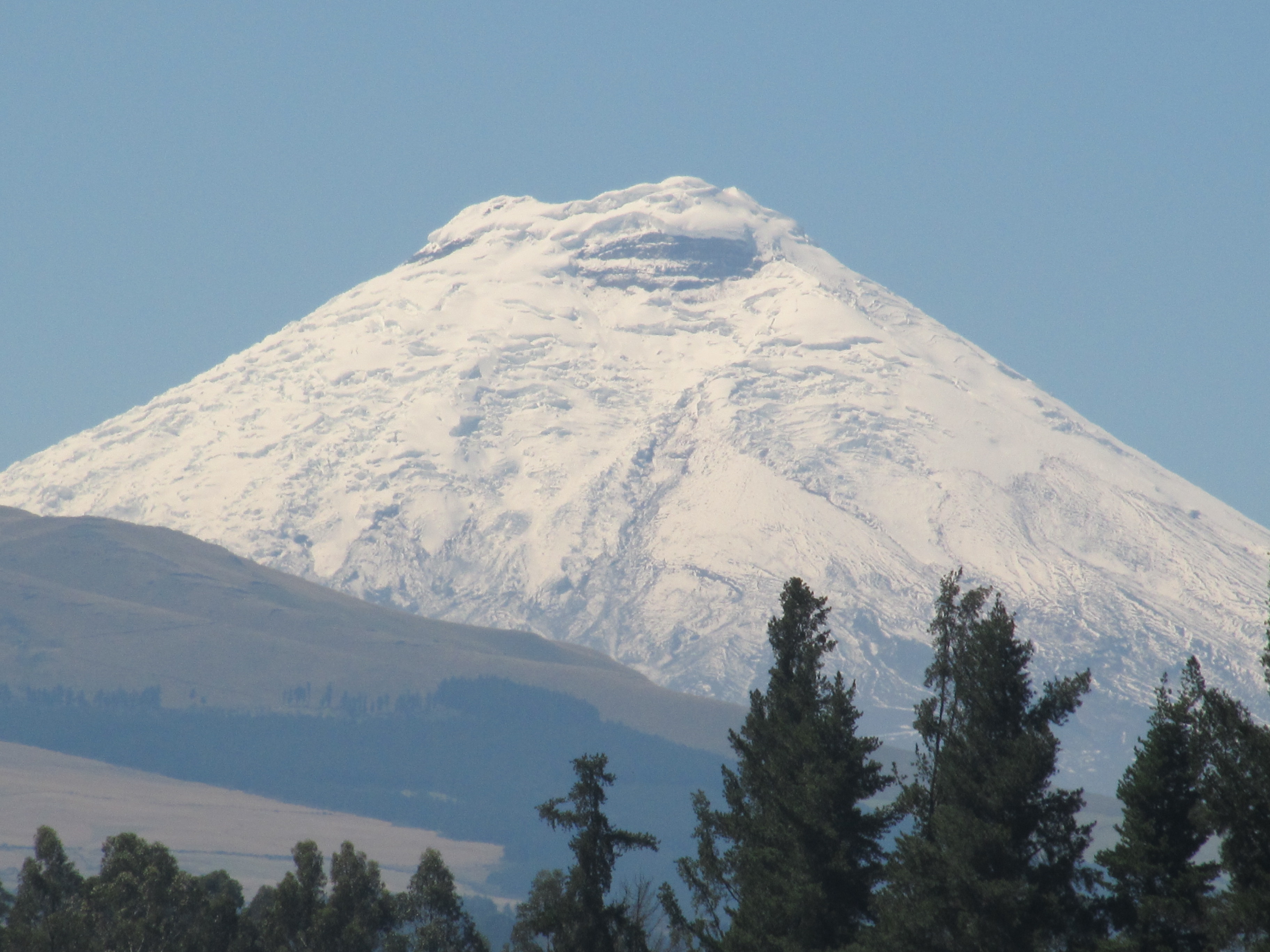Ecuador is a country that has a lot to offer: heavenly beaches, the Amazon rainforest, unique biodiversity, volcanoes, colonial architecture and a very rich culture.
To see the essentials of this multiple country, we have prepared a 15-day itinerary in Ecuador.
- Private trip with English-speaking guide
- Quito, the capital of Ecuador
- Otavalo and its famous market
- Cotopaxi National Park
- The Amazon region
- Chimborazo volcano
- Cuenca, magnificent colonial city
Day 1 – Transfer to Quito
Transfer from the airport to the hotel in the Mariscal district.
La Mariscal is located in the center of Quito in the modern city. The nightlife is very lively and close to many interesting places.
This route must start on Sunday. If it starts on Monday, we have to eliminate one day in the Amazon region.
Transfer: 45 min // Meals included: D (at the hotel)
Overnight in Quito
Day 2 – Quito City Tour – Mitad del Mundo
On this first day of travel, we will feel the equatorial sun on our shoulders when visiting the historic center of Quito, at 2 800 m above sea level. We will walk in cobbled streets full of churches, convents, government buildings and small grocery stores with a commercial activity which make these particular districts of the old city still alive.
Later, we will go to the northern area of Quito where the center of the world is located and its latitude of 0 °. You will be able to see the historical monument of the geodetic mission of measurement of the earth, and next to it, you will visit the Intiñan museum which shows a series of phenomena and forces which occur only at latitude 0.
Return to the hotel.
“Quito has one of the best-preserved old cities in Latin America. It was named as the first World Heritage City by UNESCO in 1978 because of its history, architecture and cultural life. The essential places to visit are: the Basilica of the Voto Nacional, the Plaza Grande with its government palace, the Church of San Francisco, the Church of Compañía de Jesús, the particular district of La Ronda and the Panecillo where the view of the city will allow us to better understand its incredible geographic location. ”
Transfer: 45min // Hike: 2h // Meal included: B-L-D (dinner: La Mariscal)
Overnight in Quito
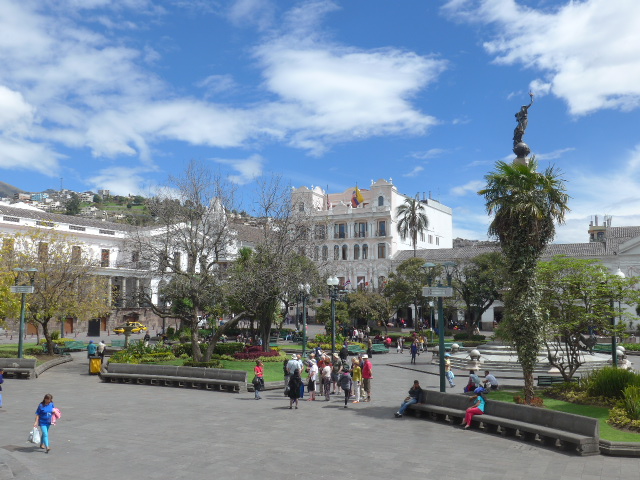
Day 3 – Quito – San Clemente
We visit the community of San Clemente where we will share a moment of conviviality with the indigenous host family. After breakfast, we will head north to the province of Imbabura. We will make a first stop at the viewpoint of Lake San Pablo, then we will head towards the community of San Clemente located at the foot of the extinct volcano of 4 621 m.
Lunch with the host family.
After lunch, you will spend the afternoon helping family members with daily tasks: cooking, caring for animals, embroidering, planting or harvesting, etc.
Note: the activities are organized on the day of your arrival as they depend on the season and the task that the family has to accomplish.
« Ecuador is a pioneer country in the development of community tourism. Across the country, several communities have organized to welcome foreign visitors to their homes and communities. The visitor can live, learn, appreciate and share the tasks of daily life of an indigenous family of the Ecuadorian Andes.
Host families want to show travelers a simple and authentic way of life. Therefore, the services offered are basic, but clean and safe. It is very important to understand that they are not hoteliers and that they do everything they can to make the traveler comfortable: to feel at home, all within a framework of mutual respect. «
Transfer: 2h30 // Hike: 1h to 2h // Meals included: B-L-D (dinner with the family)
Overnight in San Clemente

Day 4 – San Clemente – Otavalo – San Clemente
Today after breakfast, we head to the famous Otavalo market also called « Plaza de los Ponchos », known for its products and crafts of all colors. Most of these handicrafts and fabrics are made in small family workshops in the Otavalo region. Then we visit the Cuicocha volcanic lake at 3 246 m, located in a protected natural area at the foot of the Cotacachi volcano at 4 944 m. Here we will hike around the lake (about 10 km). This first walk is ideal for conditioning our body to the altitude of the Andes, the landscape created by the islets is not to be missed and you will discover why on it is called « cuy-cocha ».
Lunch during the walk.
At the end, we visit the town of Cotacachi, well known for its leather goods workshops. It is also one of the quietest little towns in Ecuador.
Then return to the community to help the family prepare dinner.
Transfer: 1h // Hike: 4h to 5h // Meals included: B-L-D (dinner with the family)
Overnight in San Clemente

Day 5 – San Clemente – Cotopaxi
Today, we take the Panamericana route towards Cotopaxi National Park. We stop in the village of Cayambe to taste the biscochos, then we continue until the entrance of Cotopaxi National Park. Cotopaxi volcano is located at 5 897 m above sea level. It is one of the most beautiful active volcanoes in the world and the second highest mountain in Ecuador. We start our adventure with a short hike around Lake Limpiopungo at 3 800 m. We continue towards the José Ribas refuge 4 800 m. We start our hike at 4 600 m, and weather permitting, we will reach the glacier.
Lunch at the refuge.
After the hike, we will rest in an old hacienda or mountain inn near the north entrance of the national park.
“Cotopaxi at 5 897 m, is the most visited volcano in Ecuador, it is the only volcano in Ecuador that has a perfect conical shape from all angles. Several eruptions have been recorded with very different impacts, which is why it is one of the most watched volcanoes in South America. Cotopaxi National Park was created to protect the local ecosystem, called Paramo, and to control outdoor activities in the region. Local guides accompany your walk in the vicinity of the volcano and a mountain guide is needed to reach the summit. ”
Transfer: 3h // Hike: 3h // Meal included: B-L-D (dinner at the hacienda)
Overnight near Cotopaxi
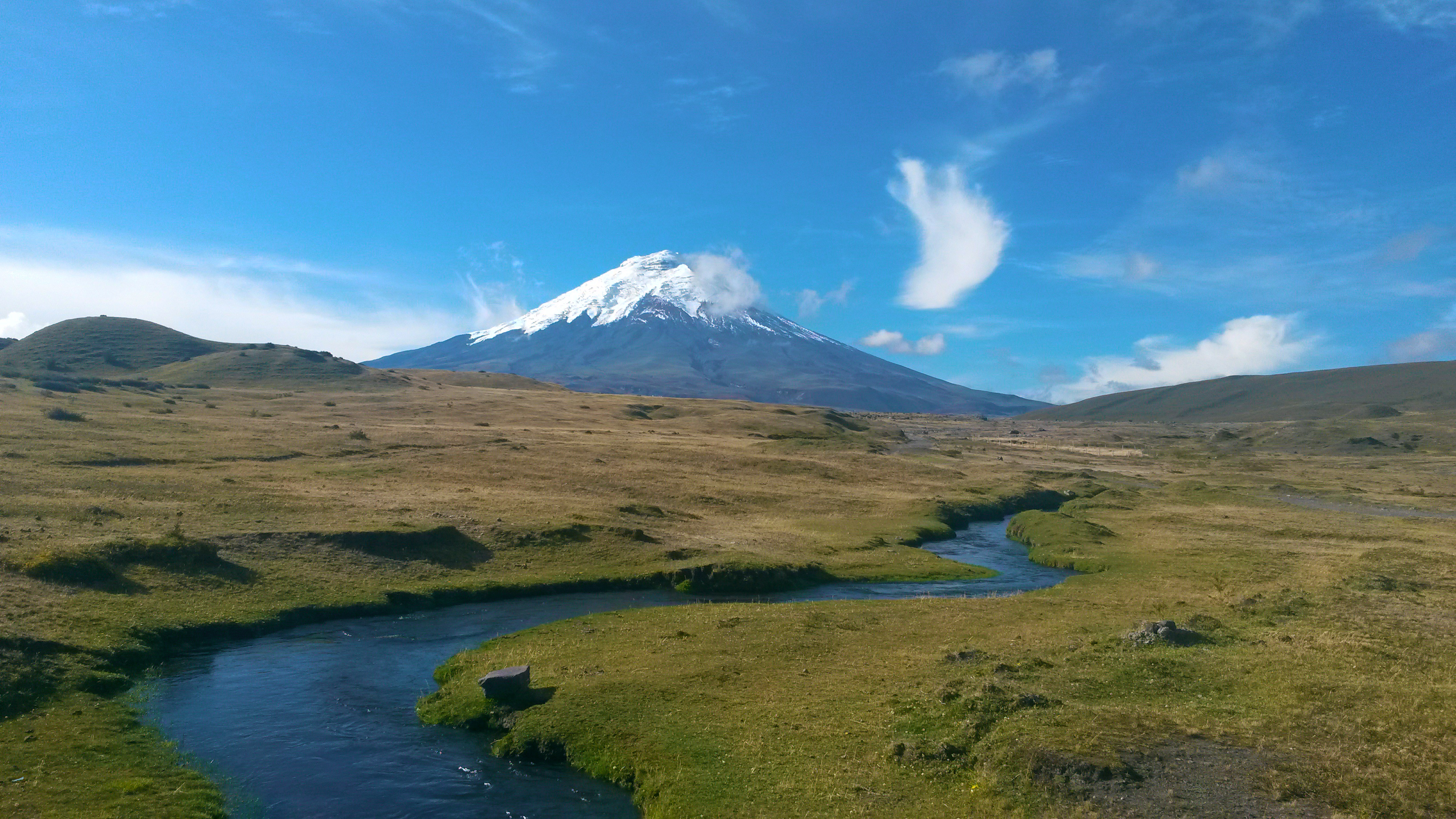
Day 6 – Cotopaxi – Amazon Rainforest (Napo)
Early in the morning, we will head to the Amazon region. After reaching a pass at 4 000 m, we stop at the thermal baths of Papallacta to enjoy the hot springs at a height of 3 250 m surrounded by a cloud forest and the mountains. Then we continue our descent to the Amazon. We will have lunch in Baeza, a village at the entrance to the Amazon. We will continue towards the city of Tena, one of the most important cities of the Amazon region of Ecuador, then towards Napo, considered as one of the largest tributaries of the Amazon river. Arrival in Puerto Barantilla and we will take a pirogue for 10 minutes to reach the Lodge.
You are greeted with a welcome drink. Then the local guide will explain the Selvaviva and Amazoonico conservation projects, as well as the activities that can be carried out in the lodge.
“Selvaviva and Amazoonico are projects initiated in 1993 by a Swiss-Kichua couple, aiming to protect the Amazon rainforest from deforestation and oil companies. Both projects are currently managed by native families in the region. The projects also manage a local pavilion and a school where the children not only have regular lessons but also lessons in several languages. The lessons are given in Spanish, Kichua, German and English ”.
Transfer: 5h to 6h // Hike: 0h // Meals included: B-L-D (dinner at the lodge)
Overnight in a lodge in the Amazon rainforest

Day 7 – Amazon Rainforest
A day of hiking in the forest!
We will walk through the Amazon primary forest. You will see gigantic trees that make the forest magical and special. This part of the Amazon is protected and preserved thanks to the Selvaviva project. Our local guide will explain the use of different medicinal plants as well as the different species of insects and birds that we find on the trail. We can swim in the crystal waters of one of the small rivers and have lunch in the middle of the forest.
Return to the lodge to relax and have dinner.
It is possible to take a night walk around the lodge to see insects, amphibians and perhaps tree snakes.
Transfer: 0h // Walk: 4h to 5h // Meals included: B-L-D
Overnight in a lodge in the Amazon rainforest

Day 8 – Amazon Rainforest
Today, we’ll explore the local way of life of Indigenous peoples on the Napo River.
We are visiting a family who will show us their house and how they built it. They will explain to us some fruits and vegetables that they grow and how they harvest them. We taste cassava and its famous drink « chicha » and we learn to use a blowgun. All these experiences will allow us to have an idea of real life in the Amazon region of Napo.
After that, join the Amazoonico, a project run by locals and volunteers from around the world working with animals rescued from illicit traffic and confiscated by Ecuadorian police or the Ministry of the Environment. Some of these animals are in good health which is one of the conditions for their reintroduction.
Lunch at the lodge.
In the afternoon, we take a canoe to find artisanal gold seekers; we will try to work like them to get gold. Return to the lodge by canoe.
Transfer: 0h // Hike: 1h30 // Meals included: B-L-D
Overnight in a lodge in the Amazon rainforest
Day 9 – Amazon Rainforest – Baños
After breakfast, we will head to Baños, one of the most emblematic places in Ecuador due to the wide variety of outdoor activities on offer.
On the way, we visit a local cooperative, Tsatsayaku, where we can see the whole process of fermentation, drying and making of cocoa mass. All the cocoa comes from small farmers in the Amazon region of the Napo River. You can taste the original flavor of the cocoa mass and cocoa beans which, after different processes, will be transformed into chocolate. After that, we continue the road, we stop at Puyo and we visit a balsa workshop.
We arrive near the Amazon region of Río Verde. This locality is part of Baños. We first visit the emblematic waterfall of the Cauldron of the Devil (Pailon del Diablo) and its famous staircase which allows us to find ourselves almost behind the water. This waterfall is one of the most emblematic of Ecuador.
After lunch in a local restaurant, we continue our adventure by visiting the Manto de la Novia waterfall and its traditional cable car above the canyon of Pastaza. For the more adventurous, it is possible to take a ride thanks to the multiple zip lines that cross the canyon (additional activity).
Then, we come to Baños.
“Baños de Agua Santa is the ancient entrance to the Amazon region and is located in the foothills of the Tungurahua volcano, at an altitude of 5 020 m. This small town is well known for its multiple activities, we can enjoy volcanic hot springs, several outdoor activities and extreme sports, taste local food in the market or in restaurants, dance salsa or simply relax . The Tungurahua has been erupting since 1999, the strongest eruption dates back to 2006. In reality its activity is moderate. In any case, the whole city of Baños is well prepared and organized in the event of a major eruption”.
Transfer: 3h30 // Hike: 1h30 to 2h // Meals included: B-L-D (dinner in town)
Overnight in Baños
Day 10 – Baños – Patate
In the morning, we will go to Patate. A valley with an eternal spring climate, with extraordinary landscapes and surrounded by avocado and tangerine farms.
Transfer to the community of Mundug and from there, hike to the Mundug waterfall. The objective of this visit is to enjoy real life in the center of the Andes of Ecuador. During the walk, you will meet people working on their farms. The waterfall is located in a cloud forest sheltering several orchids and native birds like the hummingbird.
Transfer to the family hotel for lunch. In the afternoon, we learn how to harvest avocados, tangerines and other fruits.
Then, relax in the spa of the hotel.
The evening before dinner, we will learn the secret of the preparation of potato soups, Ecuadorian ceviche or green banana tortilla.
Transfer: 1h // Hike: 3h30 // Meals included: B-L-D (dinner at the hotel)
Overnight in Patate
Day 11 – Patate – Chimborazo – Riobamba
In the morning, we drive 2 hours to the entrance of the Chimborazo volcano (6 286 m). During the trip, you will see vicuñas reintroduced into the protected area. Wool is used by indigenous families who live at more than 4 000 m. It is considered the finest in the world. We will continue another 30 minutes on a dirt road to the first refuge at 4 800 m. From there, if the group conditions allow it, we will go up to the second refuge at 5 000 m. It is the highest refuge in Ecuador open all year round.
Lunch in the refuge at 4 800 m or in a community restaurant managed by the indigenous people of Chimborazo, where the main dish is made from alpaca meat.
We continue to the town of Riobamba to visit the old town before relaxing at the hotel.
“The Chimborazo volcano (6 286 m) is considered to be the closest point to the sun measured from the center of the earth and, for many years, this mountain has been considered to be the tallest in the world. Explorer Alexander Von Humboldt was the first man to reach the summit. The protected area was created to reintroduce vicuñas, to protect water sources and indigenous communities living in this arid, dry and high altitude environment. «
Transfer: 3:30 hrs // Hike: 2:30 hrs // Meals included: B-L-D (dinner in the town of Riobamba)
Overnight in Riobamba
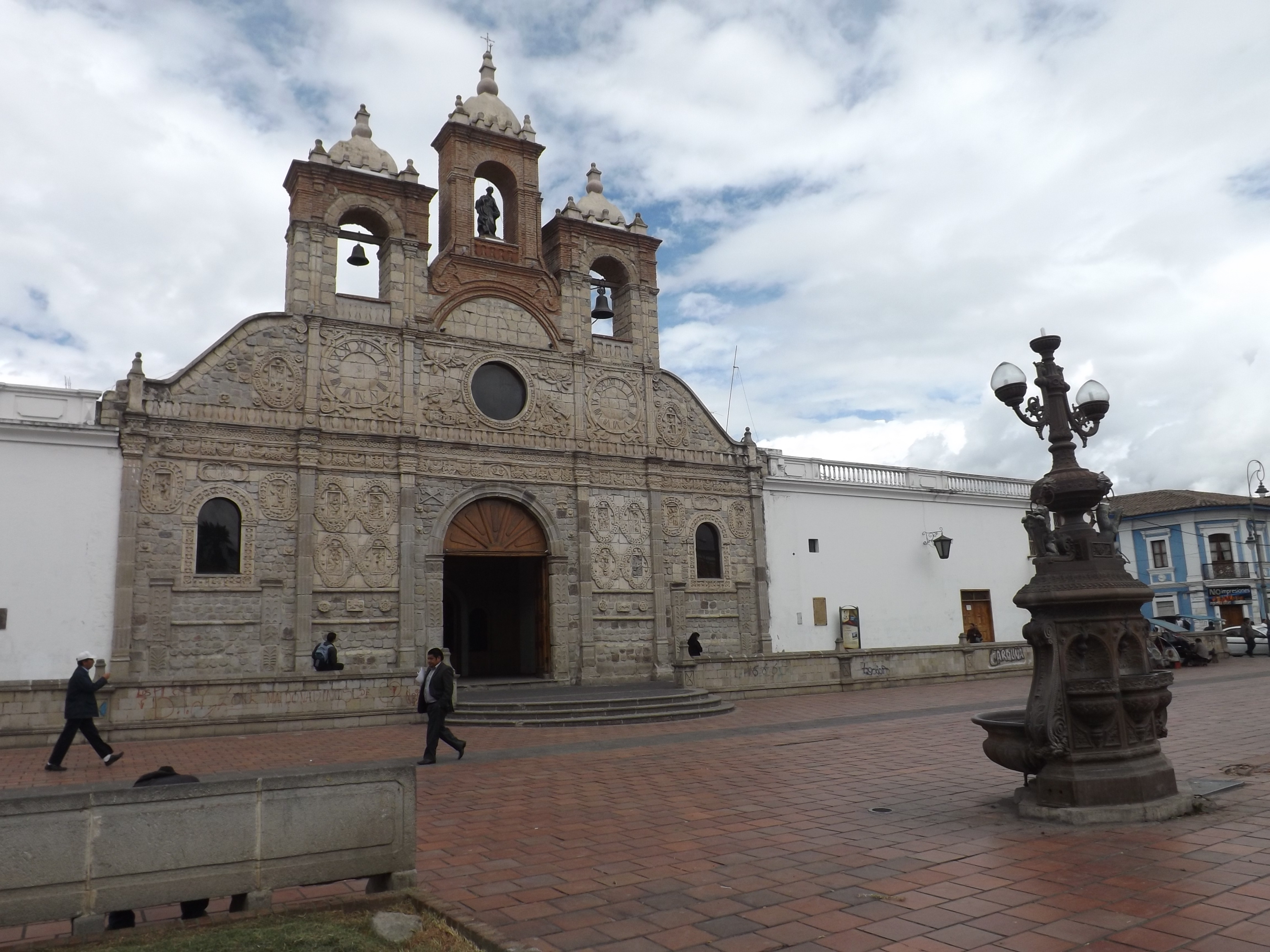
Day 12 – Riobamba – Guamote – Devil’s Nose Train – Ingapirca – Cuenca
Today, we leave the hotel early in the morning at 5.30 am. First stop at Balbanera church which is the first Catholic church built in Ecuador in 1534.
We continue to the indigenous town of Guamote at 3 100 m. Here we can see an authentic indigenous market. We first visit the animal market where you can see the ancient trade with different animals, such as cows, llamas, pigs or sheep. We continue our tour of the city center, where a large market takes place in almost all the streets. You will be surrounded by merchants who will try to sell almost everything you need: clothes, vegetables, groceries, tools, drinks, etc.
Then, direction Alausi (2 285 m). Here we will take the famous Devil’s Nose Train (at 11:00 am). The railway line crosses a narrow canyon, which at the time was one of the most difficult railway lines to build. To overcome this obstacle, a zigzag track was built. It overcomes a fall of 500 meters in just 12.5 km of dizzying ascent or descent and still constitutes an impressive construction work today. You will go to Simbabe station at 1 800 m.
After this experience, we will have lunch in a community restaurant run by locals, offering a magnificent view of the Canyon and the Devil’s Nose Train.
We continue to Ingapirca, the most important archaeological site in Ecuador. We will visit the site and discover some interesting features of the history of the Incas in Ecuador. This site was considered a temple of the sun and an important control site during the Inca period. Part of the Inca Trail is located near the site.
Finally, we take the direction of the city of Cuenca (possibility of sleeping in Ingapirca).
Transfer: 4h45 // Hike: 1h30 // Meals included: B-L-D (dinner in town)
Overnight in Cuenca
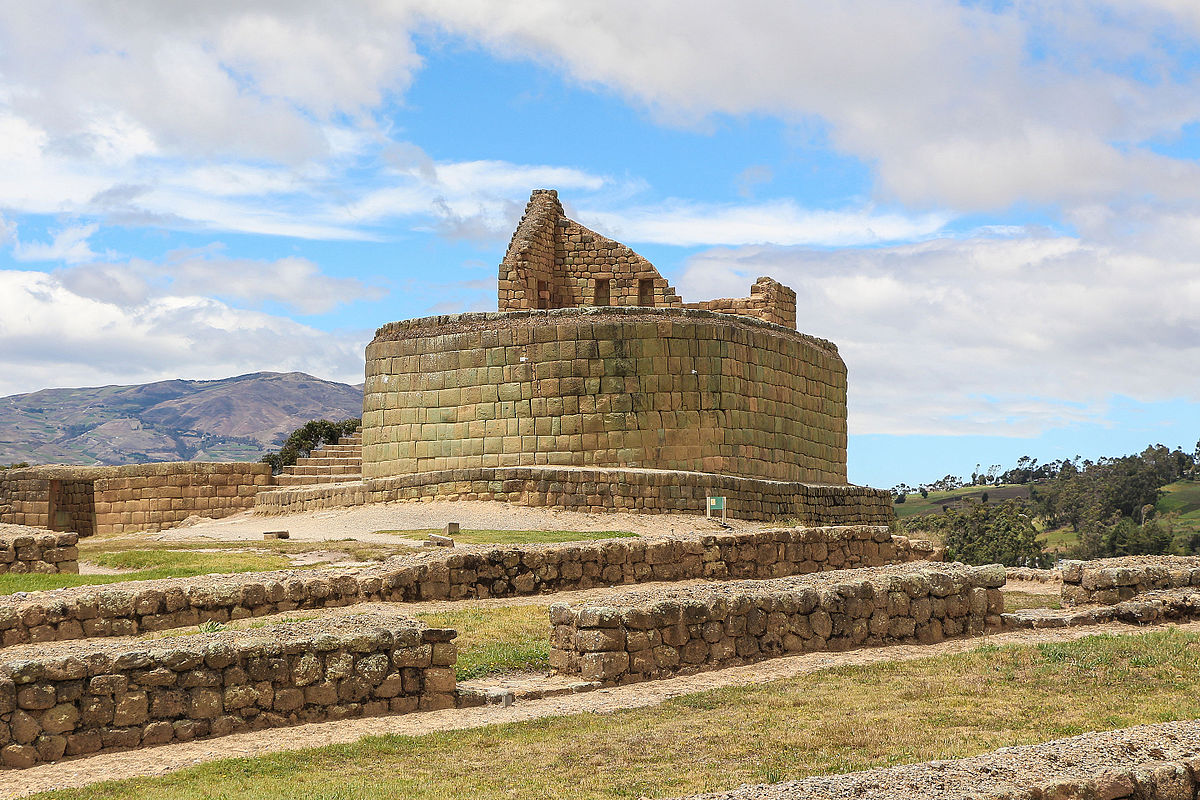
Day 13 – Cuenca – Gualaceo – Sigsig
After breakfast, we leave the city in the direction of Gualaceo. We first visit a traditional macana workshop, a traditional fabric used by women in the Cuenca region. We visit Ecuagenera, a family business specializing in the production and conservation of orchid and hybrid species exported around the world. The site has more than 1 000 species of orchids from several regions of Ecuador. We will discover here the reproductive process of hybrid orchids and discover endemic species.
After this visit, we continue to the Gualaceo market for lunch as the locals do. In the restaurant area located inside the market, you will taste typical cuisine, tortillas and baked pork.
After lunch, we will visit a small cooperative Toquilleras artesanales de Sigsig which works with hat makers made from paja toquilla. You will discover the ancestral technique of hat weaving in Ecuador.
In the afternoon, return to Cuenca.
Transfer: 2h // Hike: 1h // Meal included: B-L-D (dinner in town)
Overnight in Cuenca

Day 14 – Cuenca
Today we will discover one of the most beautiful cities in Ecuador. UNESCO considers the colonial center of Cuenca to be part of the World Heritage since 1999. Its architecture is a perfect example of Spanish style combined with local materials and ancestral techniques. Some houses still have the traditional patio. Most of them are now restaurants or hotels. The colonial center keeps this European air surrounded by the Andean mountains. You will pass through special places such as: the cathedral, the flower market, the August 10 market and the Tomebamba river.
A special visit is planned at: Turi mirador to see the city from the mountain. Discover some examples of indigenous cultures in Ecuador at the Pumapungo Museum and visit one of the city’s most iconic Panama hat workshops.
Lunch during the visit and rest of the afternoon free to explore the old town.
« The origin of the Toquilla straw hat comes from ancient indigenous groups who lived in the coastal region, notably in Jipijapa and Montecristi. They developed the art of weaving hats and other tools using their hands and fibers extracted from palm trees. The fiber or straw used to make a Panama hat is called paja toquilla (Cardulovica Palmata). In fact, the weaving technique is also used near Cuenca, especially in Sigsig, but some of the most beautiful hats are still woven in Jipijapa. It can take up to 6 months to weave some hats. Nevertheless, why is this hat called Panama? According to the story, a hat dealer immigrated to Panama to sell his hats to the workers of the Panama Canal who wore these hats to protect themselves from the sun. Panama had better business relationships than Ecuador at that time, and the merchants who bought the hats in Panama resold them as Panama hats and not as Montecristi or Ecuadorian hats, despite the fact that they were known in Panama under the names of Toquiilas, Jipijapas or Montecristis”.
Transfer: 45min // Hike: 2h30 // Meals included: B-L-D (dinner in town)
Overnight in Cuenca

Day 15 – Cuenca – Guayaquil – Transfer
Early in the morning, departure for Guayaquil for our last day. We will cross the Cajas National Park. We will stop at the pass at 4 167 m. And from there, you will descend to almost 0 m in about 1h30. You will appreciate the enormous change from the mountain forest, to the cloud forest and to the tropical landscape.
After crossing fields of bananas, cocoa, rice, sugar cane and other plantations, we will finally arrive in Guayaquil, the economic capital of Ecuador. Then we will visit the famous Barrio las Peñas and the hill of Santa Anna. We will then walk on the Malecón 2000. Finally we will arrive at the cathedral and Simón Bolivar park, the only park in South America with free iguanas.
Last lunch and transfer to the airport or hotel.
End of services.
Transfer: 4h30 // Hike: 1h30 // Meals included: B-L

Our travel programs are given as an example, to inspire you and take ideas.
Then we create with you the trip of your dreams. Depending on the duration of your trip, we advise you on the sites to be visited, you choose your accommodation, the means of transport and if you want a guide who accompanies you and makes you discover Ecuador still confidential.
Contact us by email at info@phimavoyages.com or by our contact form. We will get back to you within 24 hours.
Notes:
** The time required for transfers is approximate, it may take more or less time depending on the route conditions, the weather, any local strikes, etc.
* Guides can change the order of day trips to ensure the success of the trip.
List of suggested items to bring:
- Warm and cold weather clothing ideal for hiking
- A personal travel bag for trails
- A swimsuit and a towel
- Flash light
- Sunglasses, sunscreen, mosquito repellent
- Bottle of water
- Personal care items
The program includes:
- Private transport during the whole trip
- Transfer from and to the airport (first and last day)
- Bilingual professional national guide: Spanish / English / or Spanish / French
- Naturalist or local guide, if applicable
- Accommodation in standard hotels or guesthouses
- All meals indicated in the program, i.e. 14 breakfasts, 14 lunches and 14 dinners
- Activities and tickets included in the program
Not included :
- Flight from and to the country of origin or other unspecified internal flights
- Other type of transport not specified
- Unspecified meals
- Alcoholic and non-alcoholic drinks during meals
- Optional activities or services not specified as included in the program such as adventure activities, horse riding, bicycle rental, etc.
- Personal expenses
- Tips
- Other unspecified items
- Travel insurance
